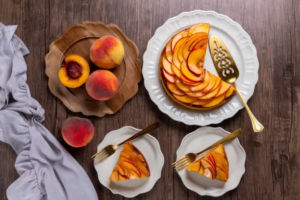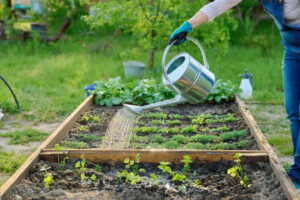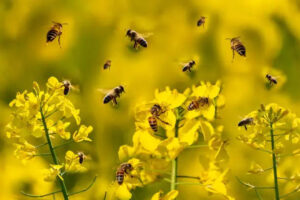Cottage gardens, with their delightful disarray and bursts of color, evoke a sense of whimsical beauty. More than just flowers and plants, the structural elements like pathways and fences play a pivotal role in enhancing the garden’s rustic charm and functionality. This article delves into the art of designing pathways and fences that not only serve practical purposes but also enrich the enchanting aesthetic of cottage gardens.
Designing Pathways in Cottage Gardens

Pathways are the backbone of any garden, guiding visitors through the enchanting floral scenery. In cottage gardens, paths are more than just practical walkways; they are an integral part of the garden’s story.
- Material Choices: The choice of materials can significantly affect the look and feel of a garden pathway. For cottage gardens, natural materials such as gravel, bark, and stepping stones are ideal. These materials blend seamlessly into the garden, enhancing the informal, rustic vibe. Gravel, with its soft, crunching sound underfoot, adds a sensory experience, while irregular stepping stones encourage a leisurely pace, inviting visitors to enjoy the surroundings.
- Curving Layouts: Unlike the straight, narrow paths of formal gardens, cottage garden pathways benefit from curving and meandering designs. These winding paths create a sense of mystery and exploration, as new floral delights are revealed at every turn. The curves help to soften the landscape, guiding the eye fluidly through the garden and mimicking the natural randomness of the wilderness.
- Plant Edging: To enhance the charm of pathways, bordering them with low-growing plants or groundcovers can be particularly effective. Plants like creeping thyme, lavender, and lady’s mantle spill onto the path, softening edges and integrating the pathway into the garden as a whole. This overgrown look is characteristic of the cottage garden’s romantic appeal.
Incorporating Fences in Cottage Gardens

Fences in a cottage garden do more than define boundaries; they also provide a backdrop for plants, support for climbing species, and contribute to the overall quaintness of the garden design.
- Natural Materials and Styles: Wooden picket fences are quintessentially cottage and can be painted in soft whites or left natural to weather to a gray that complements the greens and floral colors of the garden. Wrought iron with its intricate designs also fits well within a cottage garden, offering a more open, airy feel while still providing structure.
- Support for Climbers: Fences serve as excellent supports for climbing plants, turning a functional barrier into a vertical garden of its own. Roses, clematis, and honeysuckle can transform a simple fence into a tapestry of blooms and fragrance. This not only maximizes the gardening space but also adds to the lush, layered look typical of cottage gardens.
- Integrating with the Landscape: The key to incorporating fences in cottage gardens is to ensure they feel like a natural extension of the garden. Integrating climbing plants and shrubs around and over fences helps them blend into the landscape, rather than standing out as separate or artificial elements.

Pathways and fences are fundamental elements in the design of cottage gardens, contributing both function and aesthetic appeal. By choosing natural materials, embracing curves in pathways, and using fences as plant supports, gardeners can enhance the rustic, whimsical charm that makes cottage gardens so beloved. Through thoughtful design, these structural elements help create a garden that is not only a pleasure to walk through but also a place where the beauty of nature is celebrated in every corner.










